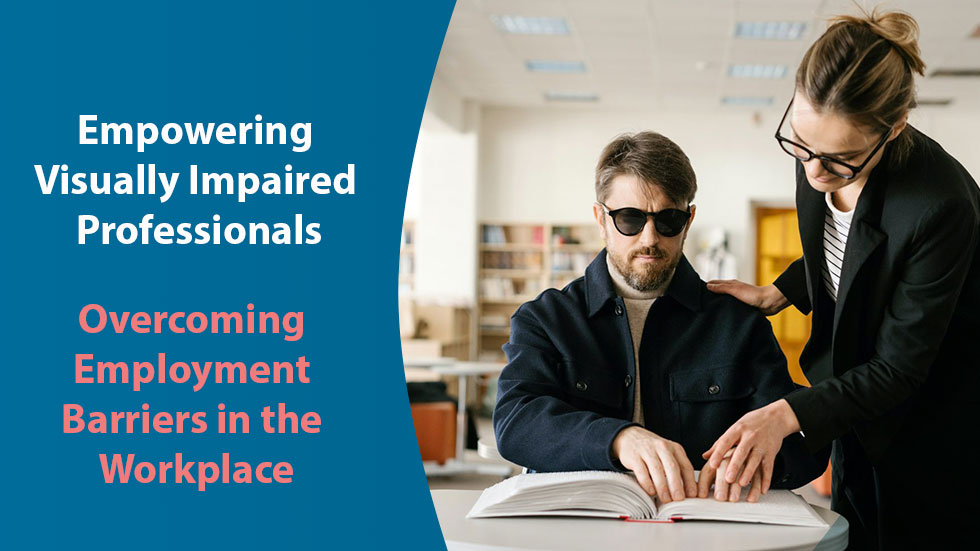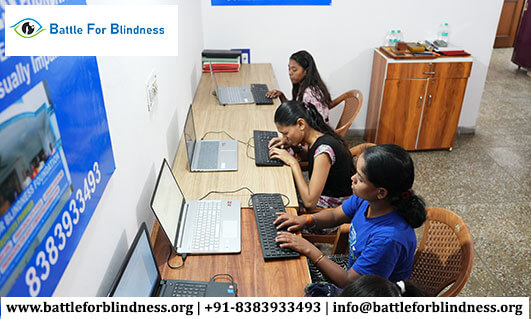
Visually impaired professionals face a myriad of challenges in the workplace that can hinder their career growth and overall job satisfaction. Despite advancements in accessibility and inclusion, barriers persist, making it crucial to address these issues and explore effective strategies for overcoming them. This blog will delve into the common employment barriers faced by visually impaired individuals and offer insights into navigating and dismantling these obstacles.
Understanding Employment Barriers
-
Physical Accessibility
Many workplaces lack adequate physical accommodations for visually impaired employees. This can include inaccessible layouts, inadequate signage, and obstacles that impede mobility. For instance, office environments with poor lighting or unclear navigation paths can create additional challenges for individuals with low vision or blindness. -
Technology Limitations
While technology has significantly improved accessibility, not all workplace tools and software are compatible with assistive technologies. Many visually impaired professionals rely on screen readers, Braille displays, and other adaptive devices to perform their tasks. If employers do not provide accessible software or training, visually impaired employees may struggle to complete their work efficiently. -
Lack of Awareness and Understanding
Misconceptions about the capabilities of visually impaired individuals often lead to discrimination and bias in hiring and promotion processes. Employers may lack understanding of how to support visually impaired employees effectively, resulting in a workplace culture that is not inclusive or accommodating. -
Social Isolation
Visually impaired professionals may experience feelings of isolation in the workplace due to difficulties in socializing and building relationships with colleagues. This isolation can impact their mental health and job satisfaction, further exacerbating feelings of being undervalued or unsupported. -
Limited Career Advancement Opportunities
Many visually impaired individuals encounter barriers when seeking promotions or career advancement. Employers may overlook them for leadership positions due to stereotypes or misconceptions about their abilities, leading to a lack of representation at higher levels.
Strategies for Overcoming Employment Barriers
-
Advocating for Accessibility
It is essential for visually impaired employees to advocate for their rights to accessible workplaces. This can involve discussing specific accommodations needed with supervisors, such as clearer signage, accessible technology, and training for staff on how to assist visually impaired employees. -
Utilizing Assistive Technologies
Employers should invest in assistive technologies that enhance accessibility. Providing tools such as screen readers, Braille displays, and adaptive software can empower visually impaired professionals to perform their tasks effectively. Additionally, offering training sessions on how to use these technologies can increase confidence and productivity. -
Promoting Inclusive Policies
Organizations should implement inclusive hiring practices and policies that focus on the capabilities of visually impaired candidates rather than their disabilities. This includes creating diverse interview panels and providing training on disability awareness for all employees to foster a more inclusive workplace culture. -
Building Support Networks
Encouraging the formation of employee resource groups (ERGs) or mentorship programs can help visually impaired professionals connect with peers and allies within the organization. These networks can provide support, share experiences, and advocate for change within the workplace. -
Fostering Open Communication
Employers should create an environment that encourages open communication about accessibility and inclusion. This can include regular feedback sessions, surveys, or open forums where employees can voice their concerns and suggest improvements. An open dialogue fosters a culture of understanding and collaboration. -
Seeking Professional Development Opportunities
Visually impaired professionals can benefit from seeking out professional development opportunities, such as workshops, training programs, or networking events. These resources can help enhance their skills, expand their professional networks, and increase their chances of career advancement.
Conclusion
While visually impaired professionals face significant employment barriers, there are effective strategies for overcoming these challenges. By advocating for accessibility, utilizing assistive technologies, promoting inclusive policies, and fostering open communication, both employees and employers can work together to create a more supportive and equitable workplace.
Breaking down these barriers is not just a matter of compliance; it’s about embracing the diverse talents and perspectives that visually impaired professionals bring to the workforce. By fostering an inclusive environment, organizations can tap into the full potential of all employees, leading to a more dynamic and innovative workplace. Together, we can create a future where everyone, regardless of their abilities, has the opportunity to thrive in their careers.





